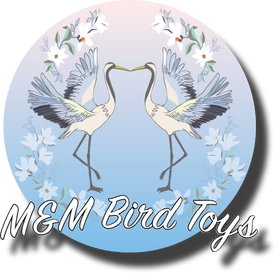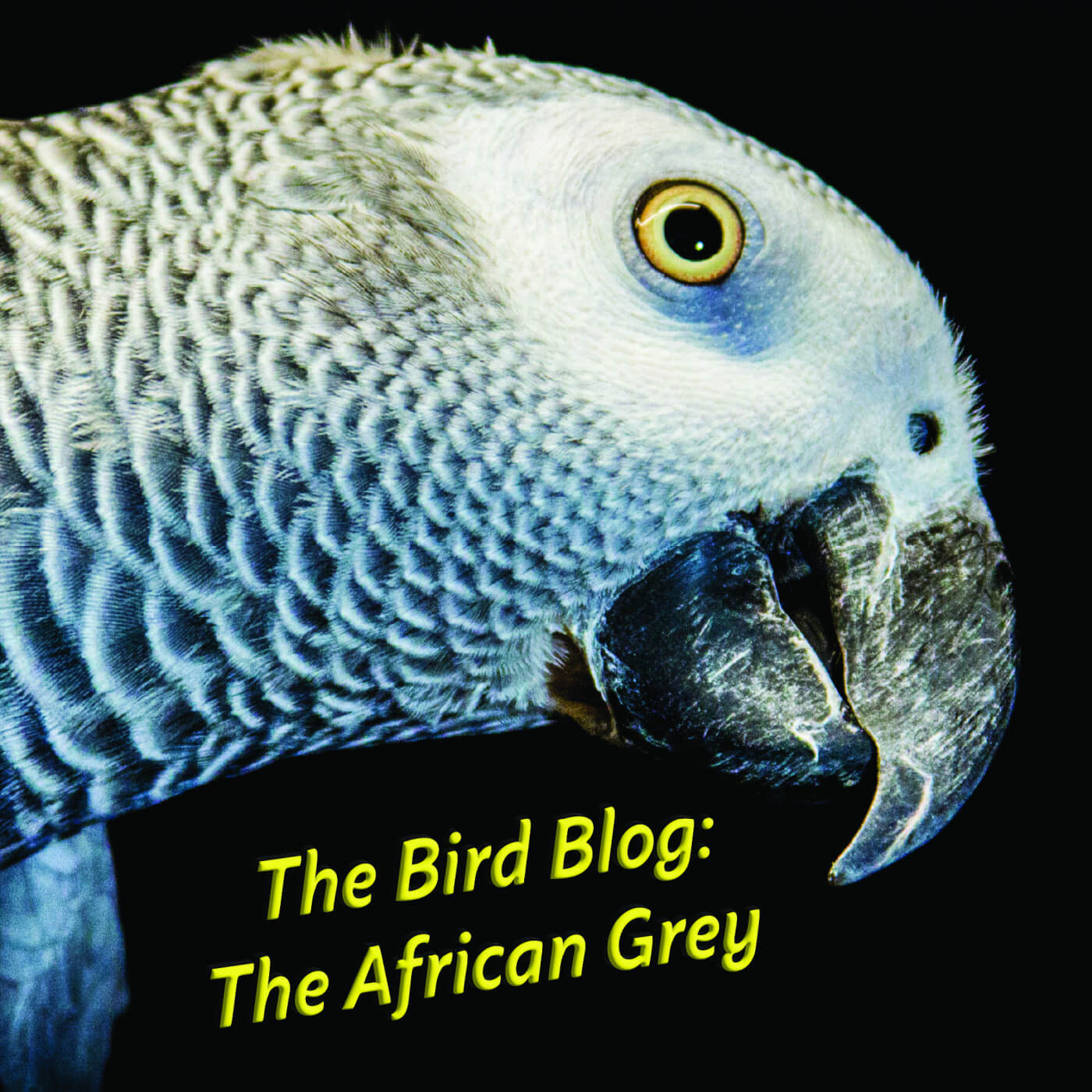The African Grey Parrot (Psittacus E. Erithacus) is a medium sized, hook bill, very intelligent parrot with a unique inquisitive personality and wonderful grey feather coloring. African Grey Parrots have an off white coloring around the eyes and above the cere with scalloped grey feathers for the body. The tail feathers are a bright crimson red thats even more bold with the contrasting grey body.

An African Grey preening its beautiful bright red tail feathers.
There are two types of African Grey Parrots - type just mentioned and the Timneh Grey. The Timneh Grey (Psittacus E. Timneh) has darker features, a pinkish-red upper mandible and maroon colored under-tail and upper-tail coverts instead of the previous bright red. African Greys grow up to approximately (14) inches in length making them a typical medium size bird breed.

The Timneh Grey is darker, has pinkish-red upper mandible and maroon tail coverts.
These amazing animals are not a parrot for beginning bird owners. These parrots require a significant amount of investment in time and money to care for properly. To begin, African Grey Parrots require a large, spacious cage where they can freely move around. A good recommended cage size is 150 x 150 x 160 cm or 59 x 59 x 63 inches. Circular cages should be avoided as this shape can cause extra undue stress on the bird. Cage bar spacing for a Grey usually should be no more than (3/4) inches apart so as to prevent the bird from getting its head between the bars. When purchasing a new cage the bar spacing should be easily advertised and seen as this is a critical part of any aviary. When purchasing a cage for a Grey, make sure to speak with the cage manufacturer about what they recommend. A good retailer will be able to explain which cage has proper bar spacing and which are best used for African Greys. African Greys love playing with toys, especially shiny, noisy, hanging, interactive toys! A good piece of information to know also is that African Greys will breed in captivity. If a pair of Greys is owned, its highly recommended to research about this subject as to avoid any unexpected Greys from being hatched!

African Grey babies are wickedly cute!
African Greys make amazing companion animals with lifelong bonds and a true loving connection. With this said, these flock mates require daily interaction with hours of time needing to be spent. African Greys get stressed very easily and if left alone for too long they can begin to exhibit destructive behaviors. As far as the lifelong bonds go, this is literal as in captivity African Greys can live up to 40 to 60 years! There’s a very good chance any owner of this parrot will have them for a significant portion, if not their entire life. During this whole period these parrots require the same amount of consistent love and attention. If this seems like a daunting or impossible task for an individual this bird is very likely not a good candidate for a pet. Knowing this fact helps these amazing animals be placed in proper homes where they can live a long, happy, stimulating, loving, stable and safe life.
Bang!
There are many great African Grey food blends available with all birds requiring a quality commercial seed mix without too many sunflower seeds in it. African Greys enjoy many foods that humans do such as boiled corn, peanuts, lean meats, cooked vegetables, yogurt and even small amounts of cheese sparingly provided. All Greys need a calcium source typically provided through cuttlebone, oyster grit or an equivalent and of course fresh clean water.
| Fruits & Vegetables | Assorted Foods | Essential Nutrition |
| Hemp | Lean Meat | Oyster Grit or equivalent bird Grit |
| Soaked & Sprouted Seeds | Pasta | Cuttlebone or other quality Calcium Source |
| Corn on the Cob | Cooked Rice | Fresh Drinking Water |
| Boiled Corn | Yogurt | |
| Spouted Mung Beans | Cheese in Moderation | |
| Pine Nuts | Whole-wheat Bread soaked in Water - during the breeding season | |
| Peanuts Sparingly | Diced, Cooked Egg | |
| Millet Spray - Should always be available | ||
| Cooked Carrots | ||
| Grated Carrots | ||
| Endives |
Works Cited: Vriends, Matthew M., and Tanya M. Heming-Vriends. The Handbook of Cage and Aviary Birds. Magnet & Steel, 2014.

